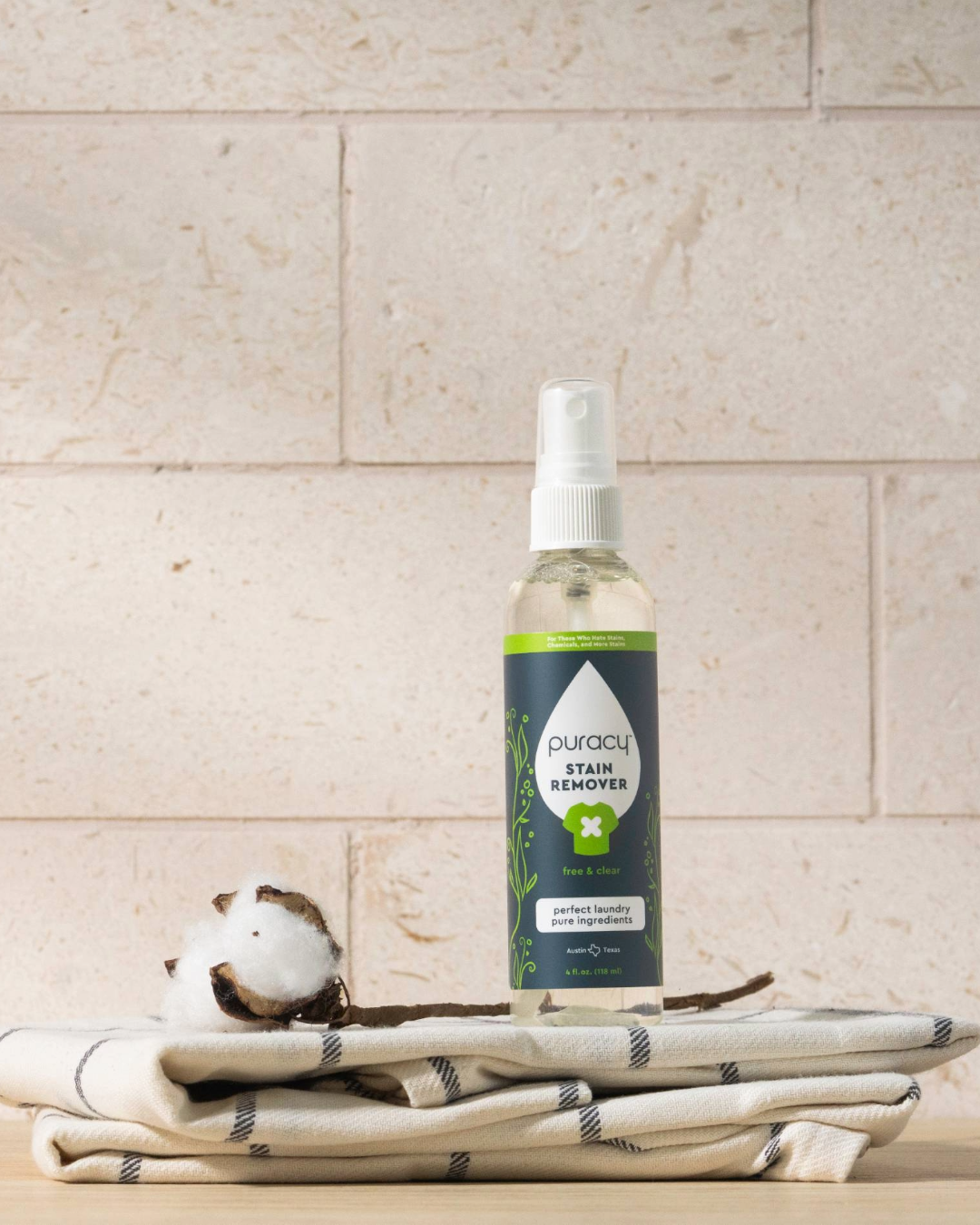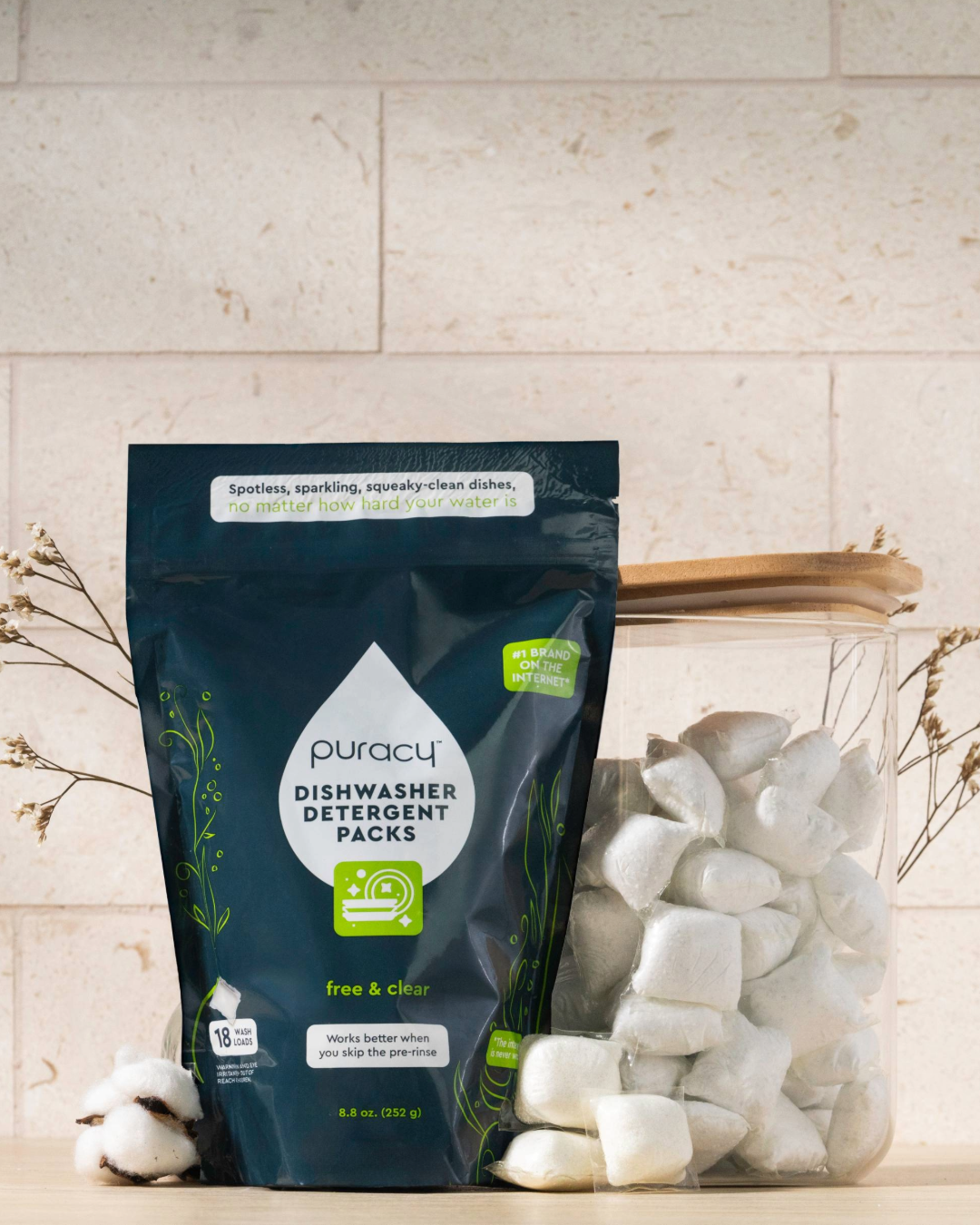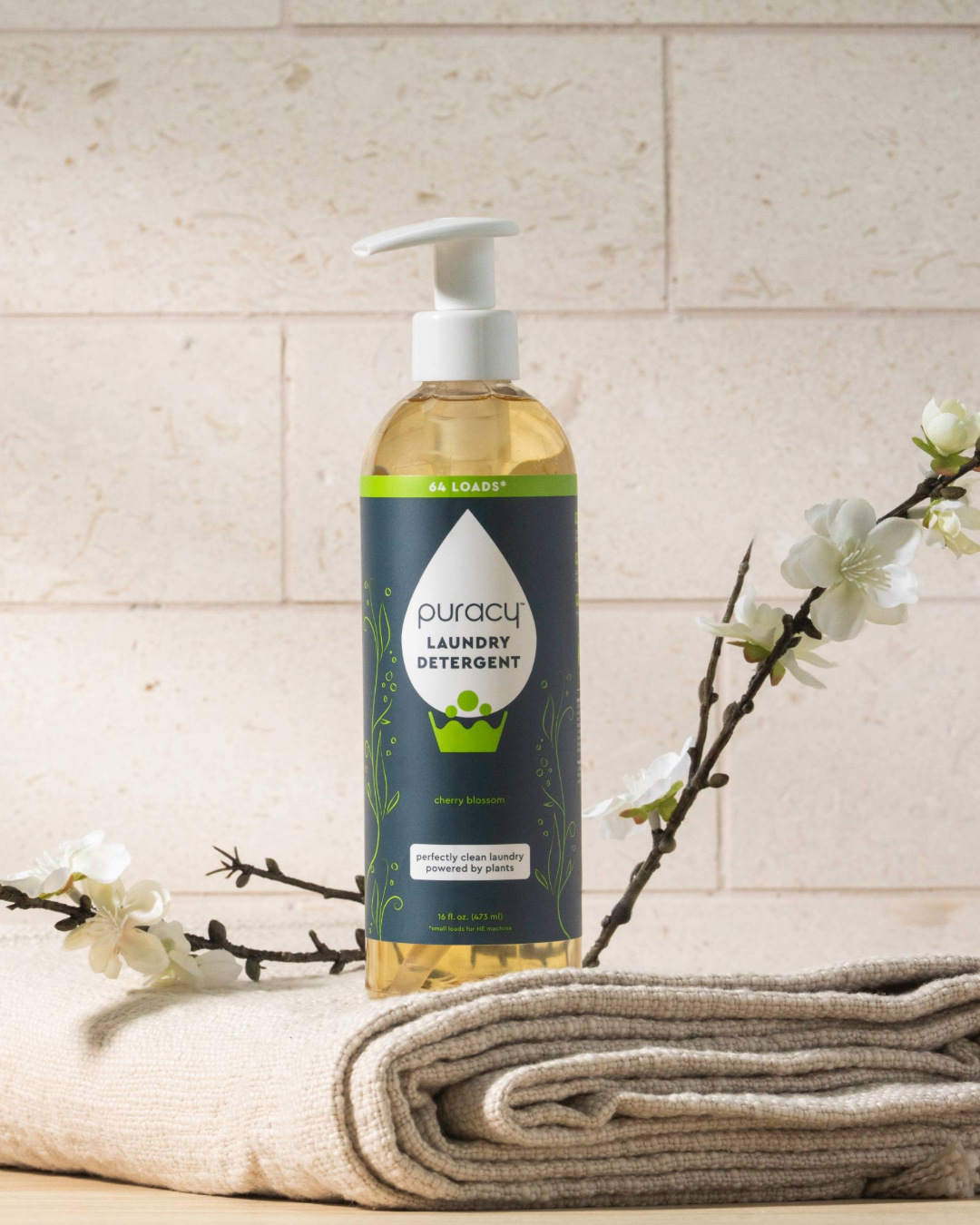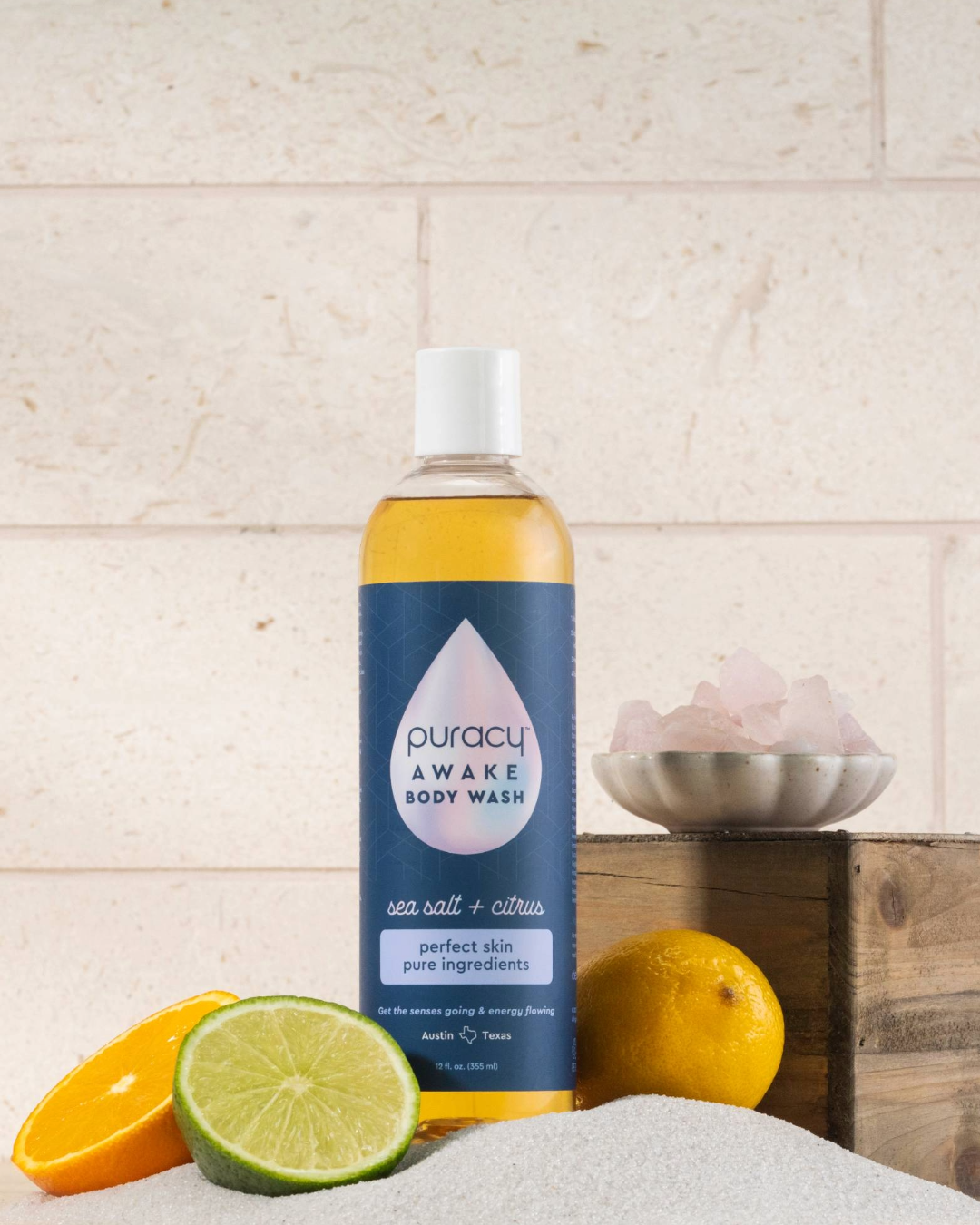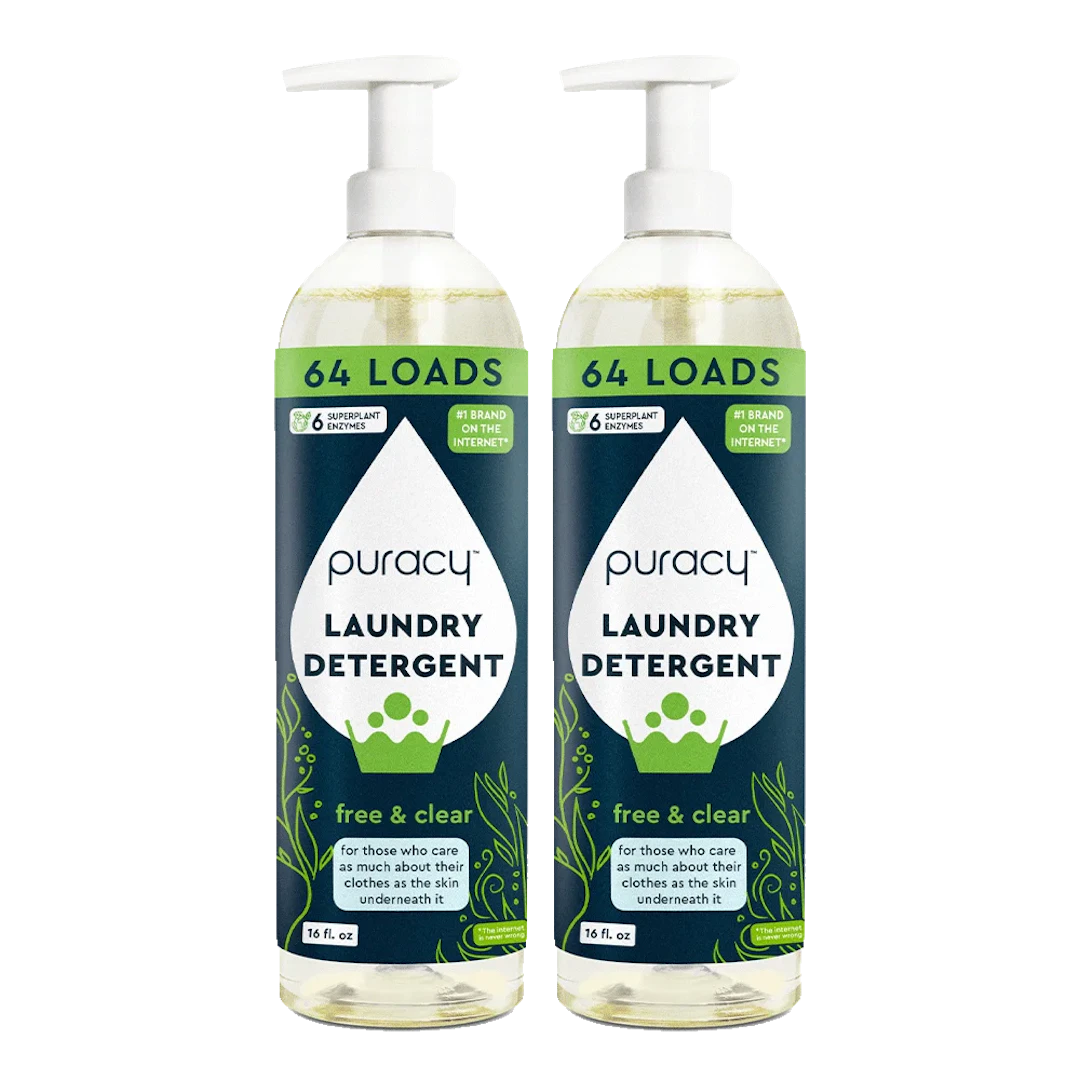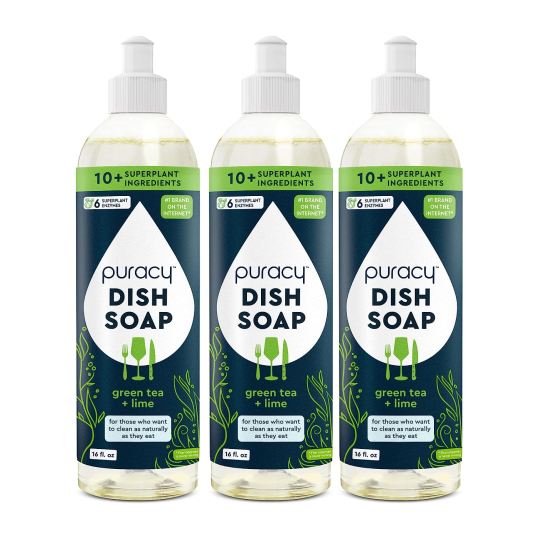
Squalene
- Derived from: olive oil
- Pronunciation: (\ˈskwā-ˌlēn\)
- Type: Naturally-derived
What Is Squalene?
Squalene is a clear, slightly yellow liquid that is a naturally occurring lipid in plants and animals.[1,2] In humans, it’s a component of sebum, which is a mixture of oils produced by the liver and glands in the skin.[3,4] It is abundant in shark liver oil, though it also exists in olive oil (which is where we obtain the ingredient), as well as oils from wheat germ and rice bran.[5] Squalene was discovered in 1906 by Japanese researcher Dr. Mitsumaru Tsujimoto.[6]
What Does Squalene Do in Our products?
Squalene is a hair conditioner that helps keep hair soft and smooth. It is also an emollient that is found in hundreds of personal care products, including moisturizers, sunscreen, lip balm, and other items.[7,8] It doesn’t dissolve in water well.[9]
Why Puracy Uses Squalene
We use olive oil–based squalene in several of our products as a hair conditioner. It is a rare alternative to harsh silicones, which are common in many products. The Cosmetics Ingredient Review has deemed the ingredient safe for use in cosmetics.[12,13] Whole Foods considers the ingredient acceptable in its body care products if it is not derived from sharks (Puracy uses olive oil–derived squalene).[14] Several studies show the ingredient is not a skin or eye irritant, nor is it a skin sensitizer.[15,16] There is some evidence that squalene helps wounds heal as well.[17]
How Squalene Is Made
As mentioned, there are several sources of squalene, but production for Puracy’s source begins by pressing the residue left over from the production of olive oil. The result is partly hydrogenated, resulting in a mixture of squalane, squalene, hydrocarbons, and unsaturated fatty acids. Fractional crystallization converts the mixture into a liquid concentrate, which is then separated. Other methods involve using compressed gas instead of solvents to extract squalene from vegetable oils.[10,11]
Certifications

Sources
[1] Environmental Working Group
[2] U.S. National Library of Medicine
[3] Cosmeticsinfo.org
[4] National Institutes of Health
[5] Cosmeticsinfo.org
[6] U.S. National Library of Medicine
[7] Environmental Working Group
[8] Cosmeticsinfo.org
[9] U.S. National Library of Medicine
[10] "Method for Producing Squalene"
[11] U.S. National Library of Medicine
[12] Personal Care Council
[13] Personal Care Council
[14] Whole Foods Market
[15] Boughton, B., et al. (1955). “Some observations on the nature, origin, and possible function of the squalene and other hydrocarbons of human sebum.” Journal of Investigative Dermatology 24(3), 179-89
[16] CTFA. (Sept. 28, 1978). Submission of data by CTFA. “Summary of safety data on Squalane/Squalene” (unpublished)
[17] U.S. National Library of Medicine
